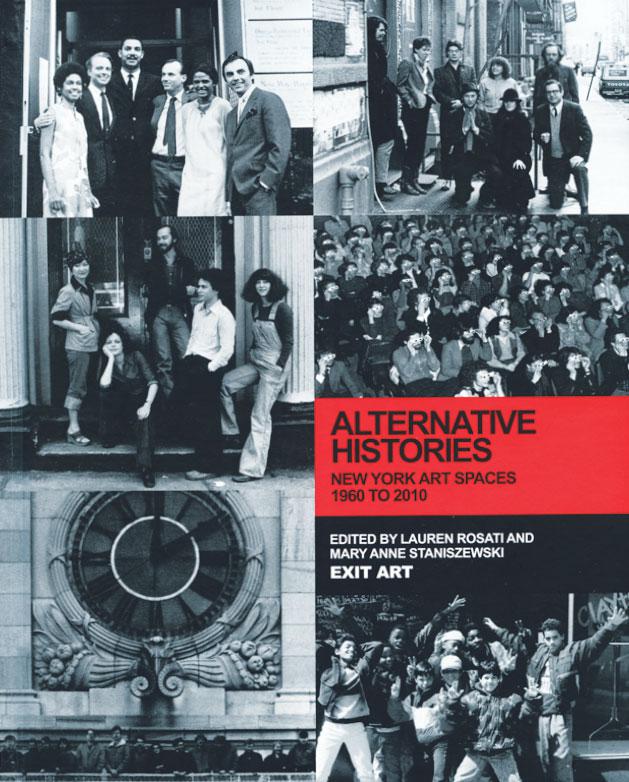Every year, the arrival of spring comes with a bloom of beautiful and interesting new art books. Here’s seven to savour.
Parallel Presents: The Art of Pierre Huyghe by Amelia Barikin, MIT Press, 278 pp., $34.95
Pierre Huyghe was certainly overdue for a monograph: for 20 years, the French artist’s multiform work has been introducing fictive elements to reality, garnering much critical praise. In Parallel Presents, Amelia Barikin takes a trip through Huyghe’s oeuvre, following his work from studies of incomplete architecture in Spain and the invention of a community celebration for a housing development on a bank of the Hudson River to his multifaceted digital avatar project and an Antarctic voyage in search of a mythical penguin. This thorough and highly readable text offers new insights into Huyghe’s works, often revisiting past criticism and expanding on the commentary. The author also explains and vigilantly rebuts the late-1990s pigeonholing of Huyghe as an artist primarily working in a “relational aesthetic,” and thoughtfully analyzes Huyghe’s recurring concepts of “freed time” and an “open present” using the artist’s ongoing interest in temporality and time codes, translation, dubbing, collaboration-staging scenarios and the intersection of fiction and fact.
Michael Asher: Kunsthalle Bern, 1992 by Anne Rorimer, Afterall Books, 116 pp., $16.00
This detailed study traces Michael Asher’s passage though the Conceptual art period as a pioneer of site-specific art and as an essential forebear of institutional critique. In reflecting on Kunsthalle Bern, Bern, Switzerland October 16–November 29, 1992, Rorimer draws attention to Asher’s exploration of the museological apparatuses that frame exhibitions: temporary walls, light diffusers, storage spaces and heating systems. Asher’s work is analyzed in the context both of his contemporaries and of a younger generation of artists that is echoing his concerns.
Impressionism, Fashion & Modernity edited by Gloria Groom, Art Institute of Chicago/Yale University Press, 336 pp., $64.60
Haircuts and hemlines are often read as yardsticks of the times, but a travelling exhibition (on view through May at the Met) contends that art historians have overlooked the connection between 19th-century fashion and the development of modern painting. Featuring lush reproductions alongside fashion plates and cartes de visite, this handsome catalogue reveals the enlivening influence of la mode on la nouvelle peinture. Fifteen scholars offer analysis, and eight key Impressionist works (including The Parisienne and Paris Street; Rainy Day) are discussed in detail.
Ian Wallace: At the Intersection of Painting and Photography by Daina Augaitis, Stan Douglas, Jeff Derksen et al., Black Dog Publishing, 352 pp., $59.95
It’s difficult to overstate the influence of Vancouver artist Ian Wallace. For more than four decades, he’s held a central place in the shifting discourse on painting and photography, with a “literature of images” that matches intellectual rigour and modernist aesthetics with an abiding concern for the politics of contemporary life. Published in conjunction with a recent career survey at the Vancouver Art Gallery, this comprehensive volume of concise essays, interviews and images offers an exceptional, must-read overview of his practice.
Canadian Folk Art to 1950 by John A. Fleming and Michael J. Rowan, Canadian Museum of Civilization/University of Alberta Press, 557 pp., $44.70
A walk through the folk-art rooms at the Art Gallery of Nova Scotia makes any doubts about folk art moot. So does this book. Its remarkable photos by James A. Chambers present a treasure trove of impressive works. The authors pin their enthusiasm on folk art’s role as an expression of the aesthetics of the everyday. Fifteen years ago much the same was said about the demotic aspects of contemporary art. But based on what we see here, folk art doesn’t need elaborate rationalizations. Its often droll, refreshing inventiveness is argument enough.
Alternative Histories: New York Art Spaces 1960 to 2010 edited by Lauren Rosati and Mary Anne Staniszewski, MIT Press, 405 pp., $39.75
Conceptualism is now canonical, but it is precisely this canonization (and its attendant difficulties) that highlights the need for documentation and memorialization of events and spaces that are by nature ephemeral. This veritable chronology of New York art spaces from 1960 to 2010, based on a fall 2010 exhibition at Exit Art, is thus indispensable, doubling as a tale of the city’s artist migrations. (It might have been subtitled “From SoHo to Bushwick.”)
A Concise History of Canadian Painting, Third Edition by Dennis Reid, Oxford University Press, 528 pp., $59.95
Prominent art historian Dennis Reid’s A Concise History of Canadian Painting has been the go-to volume for Canadian-art neophytes since 1973. With this third edition, it is clear the topic has so widened in appreciation and understanding—the new volume is more than 500 pages—that concision itself is a challenge. Nonetheless, Reid moves swiftly and engagingly, adding a final chapter chronicling robust developments in the medium from 1988 to 2000.
These reviews appear in the Spring 2013 issue of Canadian Art, which is on newsstands now. To find out more about other articles in this issue, please visit its table of contents.









